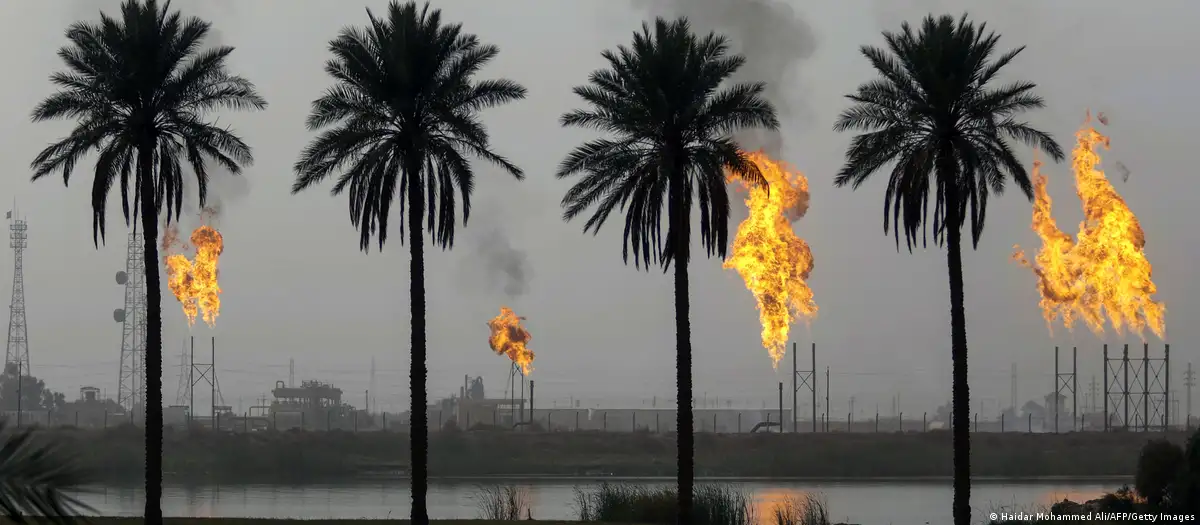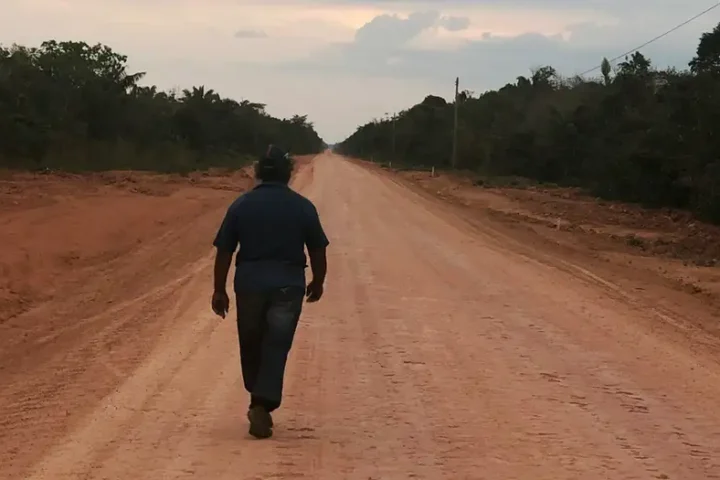Despite corporate messaging touting a low-carbon future, many of the world’s top oil and gas companies are failing to meet global climate goals. And they’re making plans to expand.
Nearly a decade on from the historic 2015 Paris Agreement, oil and gas companies are nowhere near meeting targets to limit global warming to 1.5 degrees Celsius (2.7 degrees Fahrenheit) — a goal that itself is becoming increasingly unlikely.
That’s the assessment of the latest report from Carbon Tracker, a London-based think tank that monitors how financial markets and investments can affect climate change. The evaluation compared 25 of the world’s largest oil and gas companies, including BP, TotalEnergies, PetroChina and Saudi Aramco.
“Companies worldwide are publicly stating they are supportive of the goals of the Paris Agreement and claim to be part of the solution in accelerating the energy transition,” said Maeve O’Connor, an oil and gas analyst at Carbon Tracker and author of the report.
“Unfortunately, however, we see that none are currently aligned with the goals of the Paris Agreement,” added O’Connor.

The report aims to hold companies to account, and influence climate action by making investors aware of the risks of continued reliance on fossil fuels, the burning of which is the largest contributor to planetary heating.
BP best of a bad bunch
After analyzing public data, Carbon Tracker judged each oil and gas company in five key areas: investment plans, recently approved projects, production plans, emissions targets and executive remuneration policies, which may be used to reward CEOs to boost production.
The company to come off best in the ranking was British oil giant BP, though its barely passing grade of D isn’t anything to write home about. And a more detailed analysis by Carbon Tracker pointed out that BP “is still exploring for new reserves across six continents and planning a significant increase in its [liquefied natural gas] portfolio.”
Among the major oil and gas companies analyzed by Carbon Tracker, BP was still the only one aiming to cut its production by 2030. Three other European companies — Spain’s Repsol, Equinor in Norway and UK-based Shell — have committed to keeping production volumes flat. Chesapeake Energy, based in the US, was set to drop production in 2024 but its longer term strategy remains unclear.
Most companies evaluated by Carbon Tracker, however, were still planning to expand their fossil fuel production in the next decade. At the extreme end, American multinational ConocoPhillips is aiming to increase production by 47% over the next five to eight years, compared with its 2022 output.
These expansion plans appear to be at odds with prevailing energy trends. In its World Energy Outlook published last year, the International Energy Agency projected that demand for fossil fuels would begin to decrease in the near future.
“The momentum behind clean energy transitions is now sufficient for global demand for coal, oil and natural gas to all reach a high point before 2030,” said the IEA report. That opens up the risk of oversupply and that these major companies may have to abandon some of their expansion plans.
“Companies must be aware of how the switch from fossil fuels to clean technologies might impact their bottom lines,” said Mike Coffin, Carbon Tracker’s lead expert on oil, gas and mining, in September. “They continue to put investors at risk by failing to plan for production cuts as the energy transition gathers pace.”
Only one company ‘potentially’ aligned with Paris goals
Four of the five highest scoring companies were based in Europe. The bottom of the table was dominated by firms in Saudi Arabia, Brazil and, predominantly, the United States.
Accordingly, these companies scored very poorly when ranked against the emissions targets set out in the Paris Agreement. Only one company — Italy’s ENI — had targets that Carbon Tracker said were “potentially” aligned with the Paris goals. That means it’s aiming to achieve net-zero emissions by 2050 across the entire life cycle of its fuel, from the operation of oil and gas plants to the fumes released when the fuel is eventually burned in cars and industrial processes.
In its 2023 analysis, the International Energy Agency said most companies were still focused only on reducing emissions from the production, transport and processing of oil and gas, which account for around 15% of total energy-related greenhouse gas emissions at source.
“Only a fraction of these commitments matches the pace of decline seen in the [2050 net-zero emissions] scenario and most plan to use offsets to achieve their targets,” said the report — meaning they plan to fund emission reduction projects elsewhere, rather than focus on reducing their own emissions.
Faye Holder, who investigates oil companies’ claims for global NGO Influence Map, told DW’s Planet A that fossil fuel companies aren’t changing at the rate needed to keep up with the world’s transforming energy demands.
“They’re also lobbying against policies that would force that change, or bring it about quicker,” she said. “At the same time, promoting this very public narrative that they are doing all they can.”
Carbon Tracker said fossil fuel companies need to get ready for the inevitable shift away from oil and gas. This will reduce their exposure to investment risk — and benefit the planet.
“The energy transition is already underway, thanks to an initial push from policy action and a boost from technological innovation,” said the report. “But it needs to accelerate further still to allow us to meet the goals of the Paris Agreement and minimize temperature overshoot.”
Source: Dw










